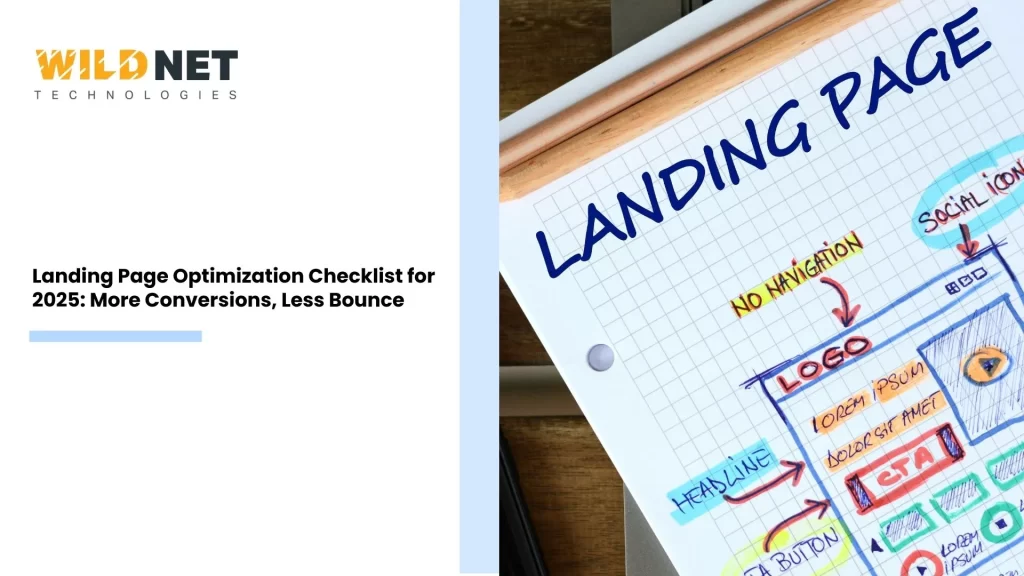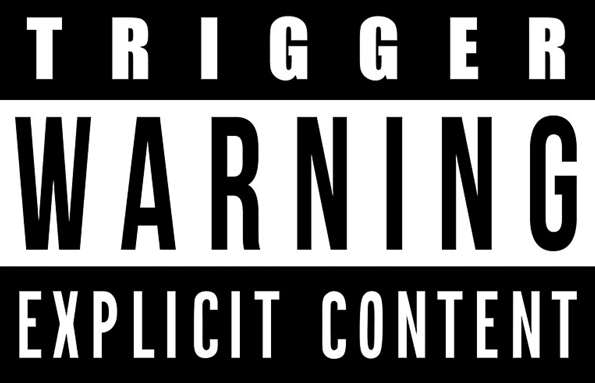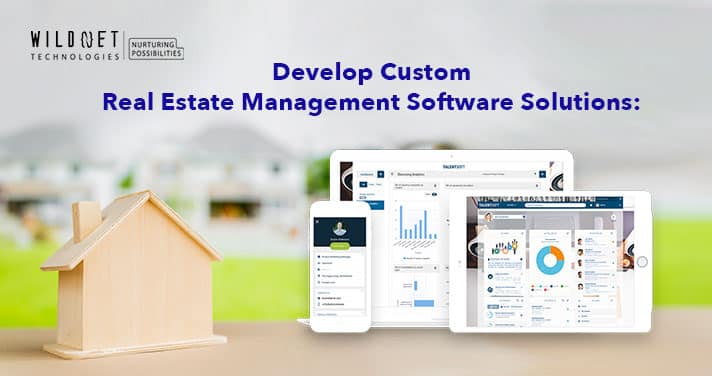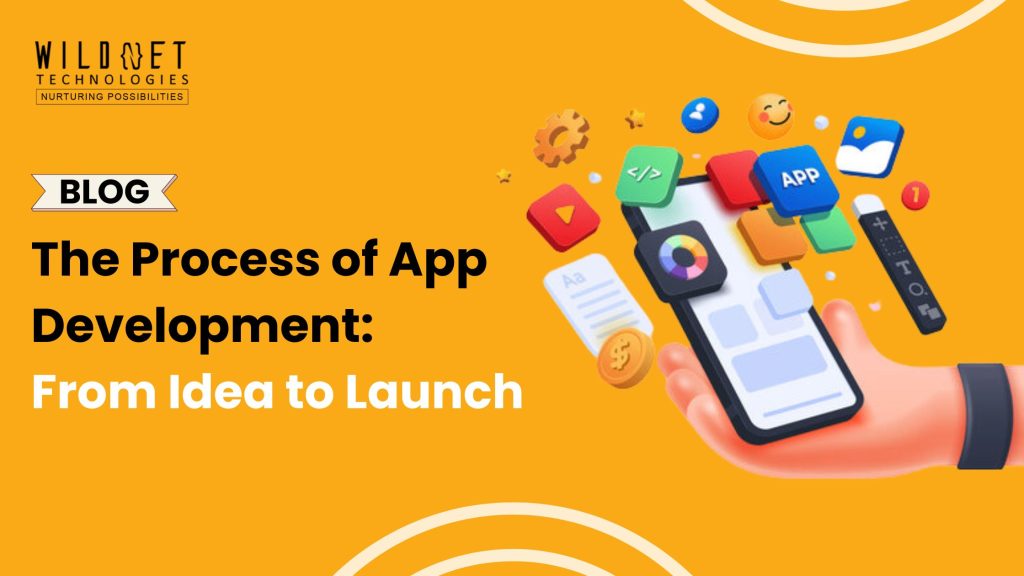This landing page optimization checklist outlines what you need to track, test, and improve to boost conversions and reduce bounces.
Introduction
You’ve created a landing page. It has an amusing aesthetic and persuasive content. With this, you hoped for amazing results, but all you got was a struggle to achieve the bare minimum. In 2025, this is a common story of many businesses. And that’s because a successful landing page optimization is way beyond aesthetic & catchy phrases. It’s a science, combining user experience (UX), search engine optimization (SEO), analytics, data-driven insight, and psychological triggers.
In this blog, learn the basics & explore the best course of action to build, fix, or fine-tune your landing pages to convert more and bounce less. Let’s get started by first understanding what it actually means.
What’s the Meaning of Landing Page Optimization( A simple explanation)?
Let’s break it down.
When you improve your landing page’s many elements with one aim – more convesions, less bounce rates, it is called landing page optimization.
It can be anything like a form fill, purchase, download, or newsletter signup. It’s about taking what’s already there and making it faster, more persuasive, more relevant, and more usable.
In 2025, putting pretty colors and catchy phrases is not anywhere near the optimization. It involves:
- Behavioral analysis (how users behave on your page)
- Data-backed decisions (A/B testing, heatmaps, scroll tracking)
- Design consistency (across devices and campaigns)
- Speed, accessibility, and SEO (yes, Google’s Core Web Vitals still matter)
- AI personalization (custom experiences based on user behavior)
So, what’s the meaning of landing page optimization? In short, it is about giving your visitors what they want, fast, while gently nudging them to convert.
Fundamentals & Why It Matters in 2025
Your landing page has only a few seconds to spark interest and it’s important it makes the most of that little time. This is the reason why landing page optimization best practices are different from what they used to be. Now performance, clarity, and conversion psychology are the core of a nicely optimized page.
Here’s what matters most now
- Speed is everything: Visitors will abandon your page if it loads in over 3 seconds. Use lazy loading, compressed images, and eliminate unnecessary scripts.
- Message match: Your landing page should match the ad, email, or social link that brought the user there. If the message feels inconsistent, bounce rates will skyrocket.
- Mobile-first design: Over 70% of traffic now comes from mobile devices. If your landing page doesn’t look or feel right on mobile, you’re leaving money on the table.
- Zero distractions: A great landing page focuses on ONE goal. No navigation bar, no exit routes. Just a clear path to conversion.
- Real-time personalization: AI now allows pages to adapt dynamically. You can serve different headlines, visuals, and offers based on user location, traffic source, or previous visits.
These are no longer nice-to-haves, they’re must-haves. If you’re still stuck with the static design element or doing the guess work, sorry to say but you’re way away from the great possibilities. Worry, not. We don’t just offer the best landing page optimization services but also proven landing page optimization tips. So, keep reading & take notes.
Hero Section & Above‑the‑Fold Elements
The hero section is your digital handshake; it must be firm, friendly, and instantly recognizable. Here are the landing page optimization best practices 2025 for the top of your page:
- Clear value proposition: Immediately state what’s in it for the visitor and why you are the solution. Use bold, benefit-oriented headlines.
- Message & design match: Ensure continuity with the ad or link they clicked. Matching imagery, colors, and wording boosts trust and conversions.
- Eye‑catching CTA: Use a color that contrasts with your branding for instant attention. Leadfeeder confirms that strong CTAs speak directly to customer needs.
- Relevant visuals: Choose high-quality images or videos that reinforce your offer—no generic stock photos. Limit videos to one per page to balance engagement and load speed.
- Above‑the‑fold clarity: Critical info and CTA should appear before users scroll. OptimizePress emphasizes leaving key elements above the fold.
Compelling Copy & Visuals
Congrats, you got their attention. The next thing you need to do is win their hearts by impressing with nice copy & visuals. To help you, here is the second part of landing page optimization tips for the same.
Copywriting essentials:
- Focus on benefits, not features. Instead of “Our CRM synchronizes data,” try “Save 5 hours weekly with instant syncing.”
- Emotional triggers like urgency, belonging, and trust drive decisions.
- Customer-centric language: Use “you” and “your” to speak directly. Top of the list, experts recommend writing user-first copy.
- Concise clarity—ditch jargon. “Problem → solution → proof → CTA” is one of the winning structures.
Visuals that convert:
- Purpose-driven media: Visuals should support headlines where you can show real usage, people, or results.
- Compress files: Optimize images and videos to speed up load times.
- Alt text for SEO: Every visual needs relevant alt tags and filenames as part of landing page SEO optimization.
Pro tip: Follow the “F-pattern” reading flow and place key info on top-left, headlines first, visuals to the right.
CTA & Form Design (Including Microcopy & FOMO)
Your CTA is where intention meets action. Make it irresistible.
CTA button & placement:
- Use intent-driven microcopy: Instead of “Submit,” try “Get Free Demo” or “Start My Trial”.
- Contrasting color ensures visibility and is consistent with best practices for higher conversions.
- FOMO triggers: Words like “Now” or “Today” create urgency. You can also put countdown timers for this reason.
Forms that convert:
- Reduce friction: Ask for essentials only, like email and name. We suggest minimal fields, especially on mobile.
- Mobile-first form design: Larger input fields, auto-fill, and simple dropdowns encourage completion.
- Trust microcopy: Reinforce security (“We hate spam too!”) near form fields.
Form best practices:
- Inline validation reduces errors and frustration.
- Progressive enhancement ensures forms work even without JavaScript, helping speed, accessibility, and crawlability.
- Sticky CTA bar: A floating CTA stays visible during scroll and drives more conversions.
Social Proof, Trust Signals & Interactive Elements
Building trust quickly is essential for conversion.
Leverage Social Proof
- Include testimonials, reviews, logos, and case studies with preferably real names and photos.
Embed Trust Badges
- Use recognitions like Security seals, BBB logos, or partner emblems. Things like “trust badges” can validate your claims.
Add Interactive Elements
- Use live chat, dropdown FAQs, or calculators for engagement.
Landing Page SEO Optimization
Don’t rely solely on ads; organic visibility is key to long-term success.
Keyword Research & Intent
- Match keywords to user intent (refer to transactional terms in PPC & SEO sections).
On-Page Elements
- Place target keywords in H1s, title tags, meta descriptions, and alt text.
- Use structured H2/H3s for readability and crawlability.
Technical & Mobile SEO
- Ensure the landing page is included in the sitemap and not blocked in robots.txt.
- Optimize for mobile-first indexing: responsive design, simplified forms, compressed media.
Page Speed Optimization
- Compress images and video, lazy-load, and remove unused scripts.
- With even a 1‑second delay, you’re reducing 7% conversion.
A/B Testing, Analytics & AI‑Powered Personalization
Landing page SEO optimization is never done; it’s data-driven and iterative.
A/B Testing & Multivariate
- Use A/B or multivariate testing to empirically validate changes.
- Flow Ninja, ECORN, and SeedProd all confirm testing drives conversion gains.
Hypothesis-Driven Process
- Formulate clear, narrow test hypotheses (e.g., “Change CTA copy to X will increase click rate”).
Data Feedback Loops
- Continuously iterate based on performance.
AI-Powered Personalization
- Use AI to dynamically adapt headlines, images, and offers based on user behavior (e.g., geography, past visits).
Landing Page Optimization Tools
When you’re exploring landing page optimization best practices 2025, checking out the tools to quickly be done with it is as important as any other step. We’ve listed below some updated tools so you get results faster.
Essential Landing Page Optimization Tools
- VWO – Offers A/B and multivariate testing, heatmaps, session recordings, and personalization modules. As one of the “top 7 landing page optimization tools,” VWO provides behavioral insights that supercharge conversions.
- Unbounce – No-code builder with AI-driven A/B testing, Smart Traffic capabilities, and dynamic text replacement for campaign-specific personalization.
- Lyssna – Focuses on usability tests like 5-second and first-click assessments, ideal for early-stage page improvements.
- Hotjar – Visualizes user behavior with heatmaps and session replays, helping you spot attention and pain points.
- Google PageSpeed Insights & Lighthouse – Powerful free tools for performance analysis and Core Web Vitals tracking.
- SEMrush, Ahrefs, Plerdy – Offer SEO insights, competitor landing page analysis, and on-page optimization suggestions.
Final Best Practices Checklist / Cheat Sheet
Here’s your consolidated checklist to ensure your 2025 landing pages perform at their peak:
- Define clear goals & KPIs – Conversion rate, bounce rate, time on page.
- Know your audience & journey – Align ad, email, or PPC → landing page.
- Clear, benefit-driven hero section – Strong headline, supporting visual, above-the-fold CTA .
- Optimized copy & visuals – Concise, emotional, formatted for readability .
- Persuasive CTA & frictionless form – Microcopy, mobile-friendly layout, progressive validation.
- Trust & social proof – Reviews, badges, case studies, early on.
- Speed & mobile-first – ≤3s load, compress assets, responsive design.
- SEO optimization – H1s, meta tags, alt text, sitemap, no-block robots.
- Testing & analytics – Heatmaps, Google Analytics 4, A/B/multivariate tests.
- AI personalization – Dynamic content based on source, geo, and behavior.
- Iterative improvements – Hypothesize, test, analyze, repeat.
Note this down as a checklist to ensure you don’t miss anything.
Conclusion & Next Steps
In 2025, landing page optimization equals smarter strategy: faster page performance, compelling copy, trustworthy design, SEO-thoughtful structure, and data-backed improvement cycles. Your landing page is not a static destination, it’s a dynamic conversion engine.
Here’s your starting playbook:
- Choose your tech stack (behavior, testing, speed, SEO).
- Launch with purpose, then measure rigorously.
- Prioritize changes based on evidence.
- Iterate continuously with AI personalization and CRO frameworks.
When you follow the steps of this checklist, you can design a landing page that acts as an optimized funnel that adapts, personalizes, and converts smarter than ever.
If you’re looking for the best agency for landing page design and optimization that can actually give you a good landing page, you can trust us at Wildnet Technologies. Our landing page optimization services specialists have years of experience and knowledge of the current market to develop a landing page that becomes a lead generator for you.







